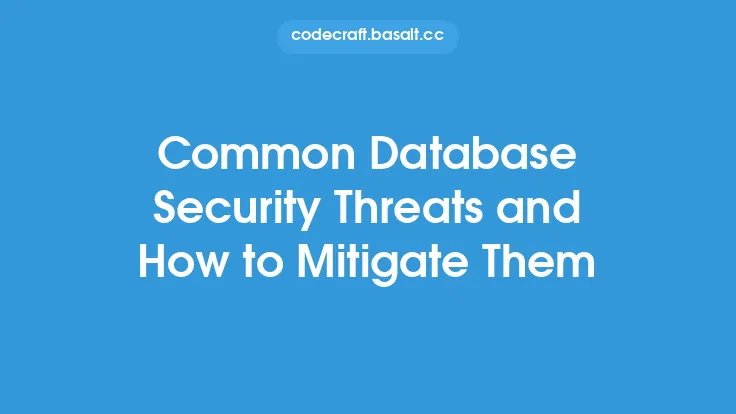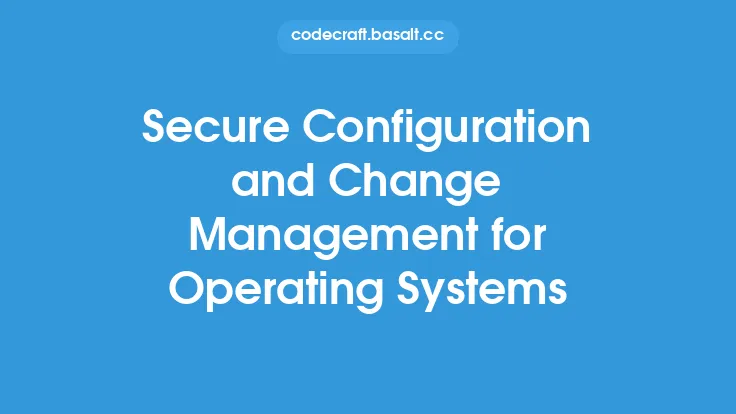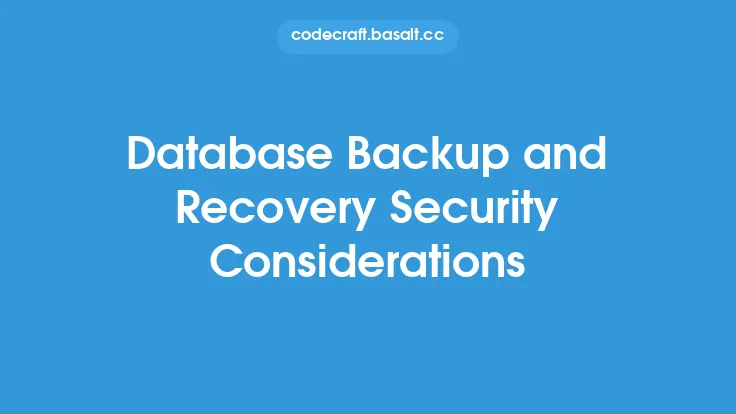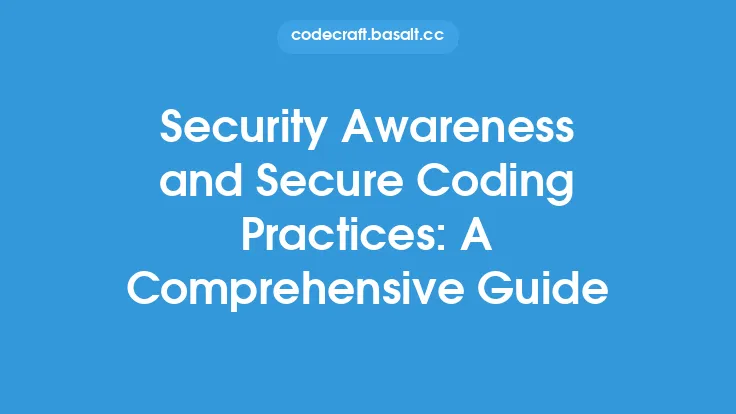Configuring and hardening a database is a critical aspect of ensuring the security and integrity of an organization's data. A secure database configuration involves setting up the database management system (DBMS) to minimize vulnerabilities and prevent unauthorized access. Hardening techniques, on the other hand, involve configuring the database to be more resilient to attacks and reducing the attack surface. In this article, we will delve into the various secure database configuration and hardening techniques that can be employed to protect an organization's data.
Introduction to Database Configuration
Database configuration refers to the process of setting up the DBMS to meet the specific needs of an organization. This includes configuring the database's network settings, authentication mechanisms, and access control lists. A secure database configuration is essential to prevent unauthorized access and ensure the integrity of the data. Some of the key aspects of database configuration include configuring the database's listening port, setting up firewall rules, and configuring the database's authentication mechanisms.
Network Configuration and Hardening
Network configuration and hardening are critical aspects of securing a database. This involves configuring the database's network settings to minimize vulnerabilities and prevent unauthorized access. Some of the key network configuration and hardening techniques include:
- Configuring the database's listening port: The database's listening port should be configured to only allow connections from trusted IP addresses.
- Setting up firewall rules: Firewall rules should be set up to only allow incoming connections to the database from trusted IP addresses.
- Disabling unnecessary network protocols: Any unnecessary network protocols should be disabled to reduce the attack surface.
- Configuring SSL/TLS: SSL/TLS should be configured to encrypt data in transit and prevent eavesdropping and tampering.
File System Configuration and Hardening
File system configuration and hardening are also critical aspects of securing a database. This involves configuring the database's file system settings to minimize vulnerabilities and prevent unauthorized access. Some of the key file system configuration and hardening techniques include:
- Configuring file system permissions: File system permissions should be configured to only allow authorized users to access the database's files.
- Setting up access control lists: Access control lists should be set up to only allow authorized users to access the database's files.
- Disabling unnecessary file system features: Any unnecessary file system features should be disabled to reduce the attack surface.
- Configuring file system encryption: File system encryption should be configured to encrypt data at rest and prevent unauthorized access.
Database Parameter Configuration and Hardening
Database parameter configuration and hardening are critical aspects of securing a database. This involves configuring the database's parameters to minimize vulnerabilities and prevent unauthorized access. Some of the key database parameter configuration and hardening techniques include:
- Configuring database parameters: Database parameters should be configured to only allow authorized users to access the database.
- Setting up database auditing: Database auditing should be set up to monitor and log all database activity.
- Disabling unnecessary database features: Any unnecessary database features should be disabled to reduce the attack surface.
- Configuring database encryption: Database encryption should be configured to encrypt data at rest and prevent unauthorized access.
Operating System Configuration and Hardening
Operating system configuration and hardening are also critical aspects of securing a database. This involves configuring the operating system's settings to minimize vulnerabilities and prevent unauthorized access. Some of the key operating system configuration and hardening techniques include:
- Configuring operating system permissions: Operating system permissions should be configured to only allow authorized users to access the database.
- Setting up operating system auditing: Operating system auditing should be set up to monitor and log all operating system activity.
- Disabling unnecessary operating system features: Any unnecessary operating system features should be disabled to reduce the attack surface.
- Configuring operating system encryption: Operating system encryption should be configured to encrypt data at rest and prevent unauthorized access.
Secure Database Configuration Tools and Techniques
There are several secure database configuration tools and techniques that can be employed to secure a database. Some of the key tools and techniques include:
- Database configuration scripts: Database configuration scripts can be used to automate the database configuration process and ensure consistency.
- Database hardening tools: Database hardening tools can be used to identify and remediate vulnerabilities in the database.
- Secure database configuration templates: Secure database configuration templates can be used to provide a secure baseline for database configuration.
- Database security benchmarks: Database security benchmarks can be used to measure the security posture of the database and identify areas for improvement.
Best Practices for Secure Database Configuration and Hardening
There are several best practices that should be followed when configuring and hardening a database. Some of the key best practices include:
- Following a secure database configuration checklist: A secure database configuration checklist should be followed to ensure that all necessary configuration steps are taken.
- Regularly reviewing and updating database configuration: Database configuration should be regularly reviewed and updated to ensure that it remains secure and up-to-date.
- Implementing a defense-in-depth approach: A defense-in-depth approach should be implemented to provide multiple layers of security and prevent unauthorized access.
- Providing ongoing training and awareness: Ongoing training and awareness should be provided to database administrators and users to ensure that they are aware of the latest security threats and best practices.
Common Challenges and Limitations
There are several common challenges and limitations that may be encountered when configuring and hardening a database. Some of the key challenges and limitations include:
- Limited resources: Limited resources, such as time and budget, may limit the ability to implement secure database configuration and hardening techniques.
- Complexity: Database configuration and hardening can be complex and require specialized knowledge and expertise.
- Legacy systems: Legacy systems may not be compatible with secure database configuration and hardening techniques, making it difficult to implement security measures.
- Balancing security and performance: Balancing security and performance can be challenging, as security measures may impact database performance.
Conclusion
In conclusion, secure database configuration and hardening are critical aspects of ensuring the security and integrity of an organization's data. By following best practices and employing secure database configuration and hardening techniques, organizations can minimize vulnerabilities and prevent unauthorized access. It is essential to regularly review and update database configuration, implement a defense-in-depth approach, and provide ongoing training and awareness to database administrators and users. By taking a proactive and ongoing approach to database security, organizations can protect their data and prevent security breaches.





